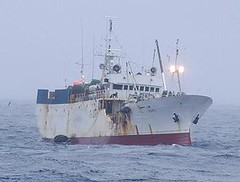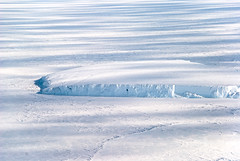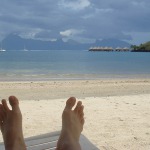 一艘載有32名船員的俄國漁船16日凌晨三點行經南極冰棚附近的羅斯海時發出了求救信號。紐西蘭救援協調中心表示,這艘55公尺長的斯巴達號(Sparta)已傾斜13度。
一艘載有32名船員的俄國漁船16日凌晨三點行經南極冰棚附近的羅斯海時發出了求救信號。紐西蘭救援協調中心表示,這艘55公尺長的斯巴達號(Sparta)已傾斜13度。
協調救援行動的RCCNZ說,另外有兩艘漁船正趕往逐漸沉沒的斯巴達號。希望在4至5天內抵達出事地點,該地點距離紐西蘭東南方約2000海浬(3704公里)。
這艘船齡23年的延繩釣漁船公司發言人Andrey Kulish表示,船上載有約180噸的燃油。船員正在將水抽出,並且把部分貨物卸到冰上以減輕船隻重量。部分船員也先撤到冰上以防萬一。
RCCNZ的搜救任務協調員戴維斯(Ramon Davis)表示,RCCNZ與斯巴達號保持了無線電聯繫,並且已連絡數艘於南大洋作業的船隻提供協助,但厚重的海冰使船隻移動困難。
斯巴達號的姊妹船千代丸3號(Chiyo Maru no. 3)正在290海浬外朝它前進,但千代丸3號並沒有破冰的能力。紐西蘭籍的San Aspiring號有些許破冰能力,也正朝向斯巴達號前進。13日時距離出事地點有470海浬,依照其當時的速度將需要4至5天才能抵達。第三艘船只有19海浬的距離,但是厚重的海冰包圍使其無法朝斯巴達號前進。
戴維斯說,一架力士型飛機由麥克莫多(McMurdo)研究站起飛,希望能找到斯巴達號。位於羅斯島南端的美國研究站麥克莫多是南極最大的社區。
飛機無法救援船員,但可以評估海冰的狀況,並且在可能的情況下,幫忙找出加速救援的方法。
 戴維斯表示,該區沒有能執行救援任務的直升機,幫助斯巴達號最好的辦法就是找出附近可以提供協助的船隻。他說,RCCNZ正持續與南大洋的船隻連繫,看看有沒有在冰中航行能力的船隻可以提供協助。「我們正在努力尋找可以加速救援的方法,但船員們可能得經歷漫長的等待。我們已經確認船上有防寒潛水衣以及其他的物資,在船員棄船的時候將有助於他們生存。」
戴維斯表示,該區沒有能執行救援任務的直升機,幫助斯巴達號最好的辦法就是找出附近可以提供協助的船隻。他說,RCCNZ正持續與南大洋的船隻連繫,看看有沒有在冰中航行能力的船隻可以提供協助。「我們正在努力尋找可以加速救援的方法,但船員們可能得經歷漫長的等待。我們已經確認船上有防寒潛水衣以及其他的物資,在船員棄船的時候將有助於他們生存。」
目前該區天氣穩定,氣溫約為攝氏3度。
澳洲南極海洋生物資源保育委員會在2011年11月29日,發給斯巴達號捕撈羅斯海圓鱈的執照,圓鱈是一種在全球高級海鮮餐廳供應的食材。
A Russian fishing vessel with 32 crew members aboard issued a distress call around 3 am, after taking on water in the Ross Sea near the Antarctic ice shelf.
The Rescue Coordination Centre New Zealand, RCCNZ, has confirmed that the 55 meter (180 foot) Sparta, is taking on water and currently has a 13 degree list.
RCCNZ, which is coordinating the rescue effort, says two other fishing vessels are making their way towards the stricken Sparta. They are expected to take four to five days to reach the area, about 2,000 nautical miles (3,704 kilometers) southeast of New Zealand.
The 23-year-old longliner is carrying around 180 tonnes of marine gas oil, said Kulish.
The crew is pumping water out of the holds and discharging cargo onto the ice to lighten the vessel. Some of the crew have been offloaded onto the ice, as a precautionary measure.
RCCNZ search and rescue mission coordinator Ramon Davis said RCCNZ is in radio contact with Sparta and has contacted a number of vessels operating in the Southern Ocean for assistance, but heavy sea ice is making vessel movement difficult.
Sparta's sister ship, Chiyo Maru no. 3, is making its way towards the stricken vessel from about 290 nautical miles away but has no capacity to cut or break through sea ice.
The New Zealand vessel San Aspiring, which has some capacity to move through ice, also is making its way towards the Sparta. San Aspiring is currently 470 nautical miles away and at its current speed is expected to reach the vessel in four to five days.
A third vessel is only 19 nautical miles away but is hemmed in by heavy ice and unable to move towards Sparta.
Davis said a Hercules aircraft from McMurdo Station is in the air and expected to reach Sparta around midday. A U.S. Antarctic research center located on the southern tip of Ross Island, McMurdo Station is the largest community in Antarctica.
The aircraft would not be able to rescue any of the crew, but it would assess the ice conditions and help identify options for speeding up the rescue effort, if possible.
Davis said there are no helicopters which could undertake a rescue in the area and the best option to assist Sparta is identifying a nearby vessel that could come to its aid.
Davis said RCCNZ is continuing to contact vessels in the Southern Ocean to see if any others with ice capability could assist.
"We are working to find a way to speed the rescue up, but it is possible the crew will have a fairly long wait for rescue," Davis said.
"We have confirmed the crew has immersion suits on board and other resources which will assist them to survive if they have to abandon the ship," he said.
The weather in the area currently is calm and the temperature is about three degrees Centigrade.
On November 29, 2011, the Australia-based Commission for the Conservation of Antarctic Marine Living Resources licensed Sparta to fish for Ross Sea toothfish, prized by high-end restaurants around the world.






